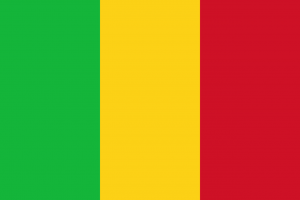Difference between revisions of "Language/Bambara/Grammar/How-to-Use-Be"
m (Quick edit) |
m (Quick edit) |
||
| Line 47: | Line 47: | ||
|description=In this lesson, we will learn how to use the verb "be" in Bambara. We will look at the different forms of the verb and how to use them in sentences. We will also look at some examples of sentences using the verb "be". | |description=In this lesson, we will learn how to use the verb "be" in Bambara. We will look at the different forms of the verb and how to use them in sentences. We will also look at some examples of sentences using the verb "be". | ||
}} | }} | ||
==Videos== | |||
===How to count from 1-10 in Bambara/Dioula - YouTube=== | |||
<youtube>https://www.youtube.com/watch?v=RadO1BeY6Ao</youtube> | |||
===How to greet in Bambara/Dioula [Part 2/2] - YouTube=== | |||
<youtube>https://www.youtube.com/watch?v=4ErBmsduhaw</youtube> | |||
{{Bambara-Page-Bottom}} | {{Bambara-Page-Bottom}} | ||
Revision as of 00:29, 2 March 2023
Hi Bambara learners! 😊
In this lesson, we will learn how to use the verb "be" in Bambara. We will look at the different forms of the verb and how to use them in sentences. We will also look at some examples of sentences using the verb "be".
Introduction
The verb "be" is one of the most important verbs in any language. In Bambara, it is used to express existence, identity, location, and other states. It is also used to form the passive voice. In this lesson, we will look at the different forms of the verb "be" and how to use them in sentences.
Forms of the Verb "Be"
The verb "be" has three forms in Bambara: n bɛ, n bɔ, and n be. The form n bɛ is used for the present tense, n bɔ is used for the past tense, and n be is used for the future tense.
Present Tense
The present tense of the verb "be" is formed with the verb n bɛ. This form is used to express existence, identity, location, and other states in the present. Here are some examples of sentences using the present tense of the verb "be":
- Person 1: N bɛ mɔgɔw? (Where are you?)
- Person 2: N bɛ sɔrɔ. (I am here.)
Past Tense
The past tense of the verb "be" is formed with the verb n bɔ. This form is used to express existence, identity, location, and other states in the past. Here are some examples of sentences using the past tense of the verb "be":
- Person 1: N bɔ kɛ? (Where were you?)
- Person 2: N bɔ sɔrɔ. (I was here.)
Future Tense
The future tense of the verb "be" is formed with the verb n be. This form is used to express existence, identity, location, and other states in the future. Here are some examples of sentences using the future tense of the verb "be":
- Person 1: N be kɛ? (Where will you be?)
- Person 2: N be sɔrɔ. (I will be here.)
Passive Voice
The passive voice of the verb "be" is formed with the verb n bɛ. This form is used to express an action that is done to someone or something. Here are some examples of sentences using the passive voice of the verb "be":
- Person 1: N bɛ kɛlɛn na? (What was done to you?)
- Person 2: N bɛ kɛlɛn. (I was done to.)
Conclusion
In this lesson, we have looked at the different forms of the verb "be" in Bambara and how to use them in sentences. We have also looked at some examples of sentences using the verb "be". Now that you know how to use the verb "be" in Bambara, you can start using it in your own sentences.
To improve your Bambara Grammar, you can also use the Polyglot Club website. Find native speakers and ask them any questions!
➡ If you have any questions, please ask them in the comments section below.
➡ Feel free to edit this wiki page if you think it can be improved. 😎
Videos
How to count from 1-10 in Bambara/Dioula - YouTube
How to greet in Bambara/Dioula [Part 2/2] - YouTube
